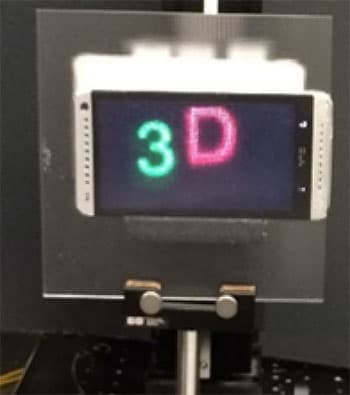Engineers Find Way To Securely Display 3D Images By Scanning QR Codes
If you thought those Quick Response (QR) codes could serve no other purpose than acting as a label that holds all information about the item to which it is attached or accessing webpages using your smart device, think again because you are about to be proven wrong by the engineers at University of Connecticut. Using a series of small lenses attached to any normal smartphone, the optical engineers have been able to display 3D images by scanning an array of QR codes. The interesting part is that you don't have to be connected to the internet. The applications of this kind of technology are immense and we can imagine having apps for playing 3D games, product visualization to be used for marketing or in manufacturing sector, as also secure transmission and storage of 3D data.
The optical engineering team achieved this by developing QR codes that can store encrypted and compressed images. Moreover, with their research they also detected a security flaw with QR codes that let's the user access a website link including malicious data if any. To solve this issue, they simply eliminated the need of the Internet, by storing self-contained slices of data in the QR codes itself. The primary image is captured as a series of 2D images from different angle and all these elemental images are combined into a final 3D image. Each elemental image goes through a program that compresses, encrypts, and stores that information as a QR code. With a QR code reader app in your smartphone, this information can be easily retrieved, whereas a separate decryption app can be used to decompress and create a 3D image out of it on top of the smartphone screen.

Though the system isn't yet full-proof or available for commercial use yet, the future applications indeed look promising. Those interested could take a look at the paper published at #-Link-Snipped-# titled "3D Integral Imaging Displays Using a QR Encoded Elemental Image Array". What are your ideas about QR codes revolutionizing the 3D technology world? Share with us in comments below.
The optical engineering team achieved this by developing QR codes that can store encrypted and compressed images. Moreover, with their research they also detected a security flaw with QR codes that let's the user access a website link including malicious data if any. To solve this issue, they simply eliminated the need of the Internet, by storing self-contained slices of data in the QR codes itself. The primary image is captured as a series of 2D images from different angle and all these elemental images are combined into a final 3D image. Each elemental image goes through a program that compresses, encrypts, and stores that information as a QR code. With a QR code reader app in your smartphone, this information can be easily retrieved, whereas a separate decryption app can be used to decompress and create a 3D image out of it on top of the smartphone screen.

Though the system isn't yet full-proof or available for commercial use yet, the future applications indeed look promising. Those interested could take a look at the paper published at #-Link-Snipped-# titled "3D Integral Imaging Displays Using a QR Encoded Elemental Image Array". What are your ideas about QR codes revolutionizing the 3D technology world? Share with us in comments below.
0
